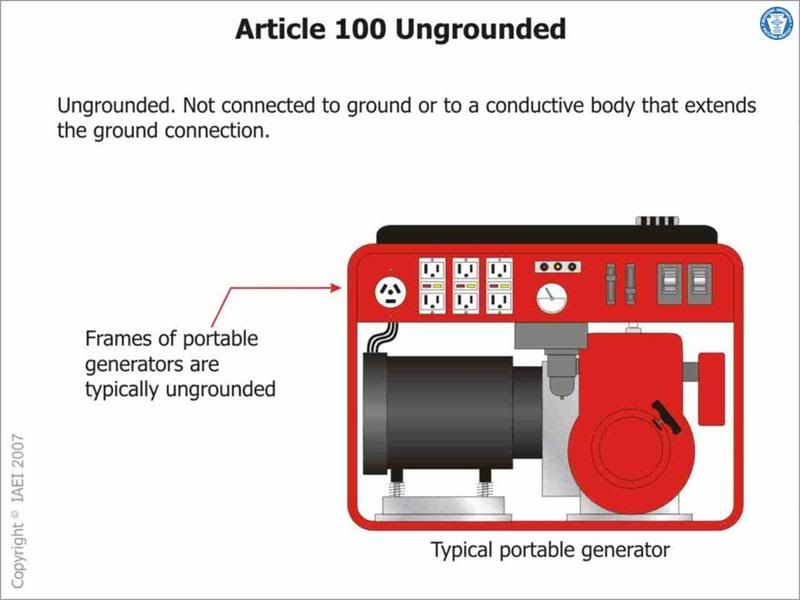- Location
- Illinois
- Occupation
- retired electrician
02 (C) Grounded Conductor Bonding. A system conductor that is required to be grounded by 250.26 shall be bonded to the generator frame where the generator is a component of a separately derived system.
05 (C) Grounded Conductor Bonding A system conductor that is required to be grounded by 250.26 shall be bonded to the generator frame where the generator is a component of a separately derived system
08 (C) Grounded Conductor Bonding. A system conductor that is required to be grounded by 250.26 shall be connected to the generator frame where the generator is a component of a separately derived system
11 (C) Grounded Conductor Bonding. A system conductor that is required to be grounded by 250.26 shall be connected to the generator frame where the generator is a component of a separately derived system.
If we go all the way back to the 1993 cycle we find similar wording but every one of the cycles all the way back to the ?93 in the FPN/IN clearly state that a generator that fits the description outlined in A and B is to be connect to a premises wiring as a SDS.
250.34 (A) & (B) relieves the requirement to connect a stand-alone generator to earth but C in all the code cycles state that the conductor that is required by 250.26 to be connected to earth is to be connected to the frame of the generator. The frame of the generator is the earth connection.
If a stand-alone generator is connected to a premises wiring system as a SDS the connection to earth takes place through the bonding conductor between the generator and the premises equipment. All metal in the premises wiring is bonded to the grounding electrode conductor at the service equipment of the premises wiring system thus the generator is also connected to earth.
Many try to use the reference in (C) to say ?if we float the neutral then the generator is a non-SDS?, but by doing so causes the other receptacles mounted on the frame to be non-code compliant and have the ability to become very dangerous. When the neutral is disconnected from the frame the devices mounted there upon are protected only from overcurrent and not protected from ground fault.
The GFCI devices will clear a ground fault on the load side of the device but will do nothing to stop a fault on the line side or clear a hot EGC. This is accomplished only through bonding the neutral to the frame.
All of that is fine and good, but under the current code there is no way to have a grounded system without a connection to a grounding electrode. This was an unintended consequence of the change in the definition of "grounded". Until this is fixed the use of a portable generator to supply "premises wiring systems" requires a connection to a grounding electrode.


